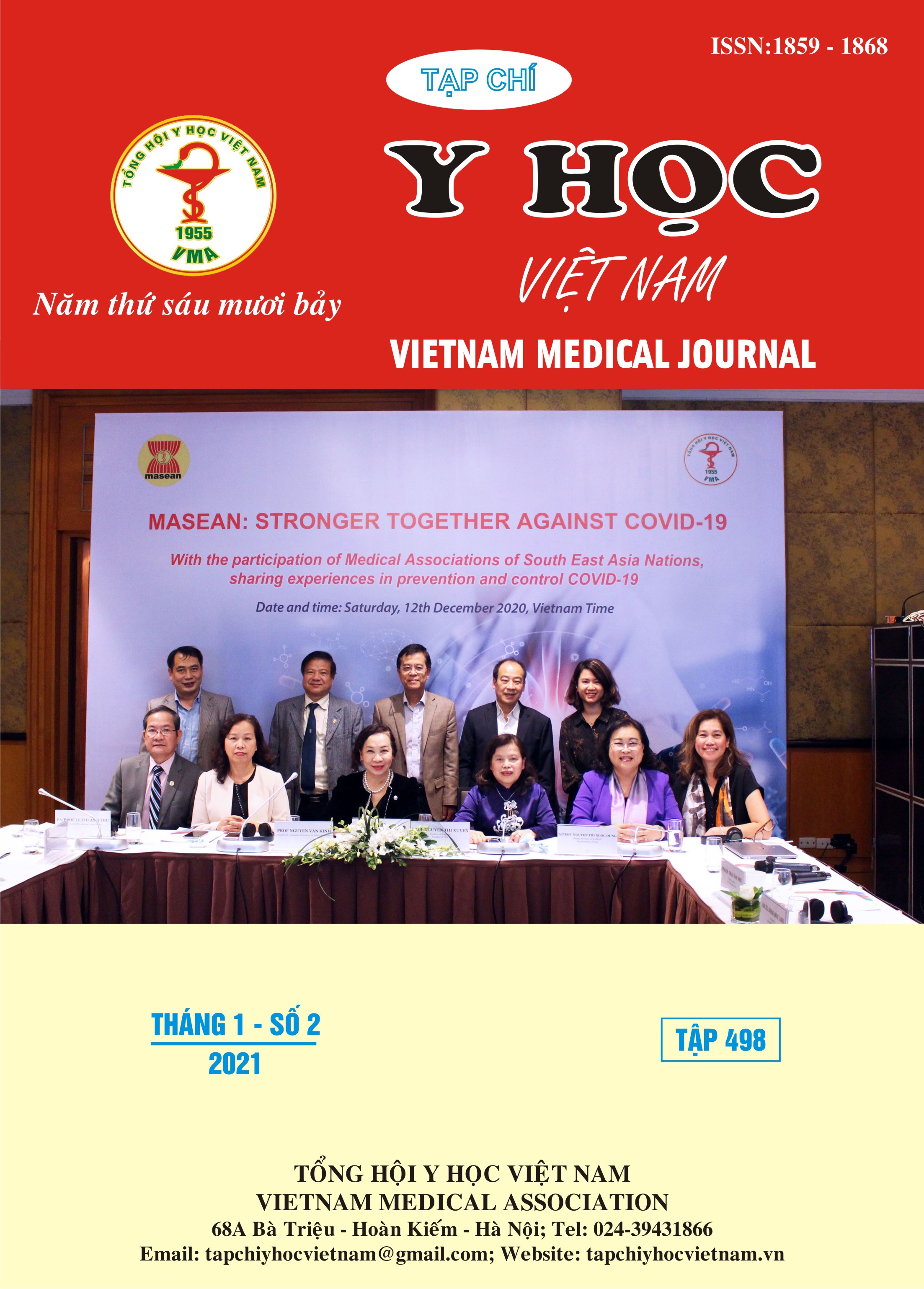RESEARCH ON EPIDURAL ANESTHESIA FOR PAIN RELIEF IN LABOR AT QUANG NGAI HOSPITAL FOR WOMEN AND CHILDREN
Main Article Content
Abstract
Background: Epidural analgesia is a commonly used method of pain relief in labor in many obstetrics hospitals, brings various benefits and avoids unnecessary cesarean sections. Epidural anesthesia with Bupivacain and Fentanyl has been used during labor in our hospital and not evaluated yet. Objectives: To evaluate the effectiveness of pain relief, adverse effects and maternal satisfaction with epidural analgesia during labor. Methods: This was a cross-sectional study on pregnant women reporting from January to October 2020 at Quang Ngai Hospital for Women and Children. The woman aged 18-40 years, classified as American Society of Anesthesiologists score I and II who requested epidural analgesia in active labor were taken for this study. Women with any contraindications to epidural techniques were excluded. Results: Out of 326 pregnant women, the figure for mean weight and height was 60,04±7,59 kg and 159,07±7,71 cm respectively. The efficacy of analgesia: the mean time of onset of analgesia was 5,77±1,35 minutes. Visual analog scale: Before epidural injection, VAS score was 7,15±1,28. After 5 minutes of epidural anesthesia and in subsequent evaluation periods, the VAS score decreased to under 4. Maternal adverse effects: We found no significant alterations with regard to maternal SpO2 values, pulse, blood pressure and fetal heart rate. There were several clinical adverse effects such as hypotension, headache, shivering, nausea and vomiting, urinary retention. 30,68% of patients reported it as a very good experience and satisfied with the procedure. Conclusion: Epidural anesthesia is an efficient way of pain relief during labor and delivery: Before epidural injection, VAS score was more than 7. In subsequent evaluation periods, the VAS score was under 4. There were no significant alterations in terms of fetal heart rate and respiratory rate of the pregnants. Adverse effects and complications were not noted.
Article Details
Keywords
epidural analgesia, pain relief in labor, Quang Ngai Hospital for Women and Children
References
2. Đỗ Văn Lợi (2017), Nghiên cứu hiệu quả giảm đau trong chuyển dạ của phương pháp gây tê ngoài màng cứng bằng Bupivacain 0,1% phối hợp Fentanyl do và không do bệnh nhân tự điều khiển, Luận án Tiến sỹ Y học Đại học Y Hà Nội.
3. Nguyễn Thị Thanh, Nguyễn Trọng Thắng (2011), "Nghiên cứu hiệu quả và an toàn của giảm đau trong chuyển dạ với gây tê ngoài màng cứng bằng Bupivacain nồng độ thấp kết hợp Fentanyl không dùng liều thử", Tạp chí Y học Thành phổ Hồ Chí Minh, tập 15, phụ bản số 3, tr.101-108.
4. Phùng Quang Thủy, Cao Ngọc Thành (2012), "Nghiên cứu ứng dụng phương pháp đẻ không đau bằng gây tê ngoài màng cứng", Tạp chí Y học thực hành, số 12(854), tr.29-32.
5. Chora I., Hussain A. (2014), "Comparison of 0.1% Ropivacaine-Fentanyl with 0.1% Bupivacain-Fentanyl Epidurally for Labour Analgesia", Advances in Anesthesiology.
6. Esra K., All K (2016), "Comparison of patient controlled analgesia with Bupivacain or Bupivacain plus Fentanyl during labor", International Journal of Clinical Anesthesiology. 4(2), pp.1-4.
7. Gündüz Ş., et al (2017), "Comparison of Bupivacain and Ropivacaine in combination with Fentanyl used for walking epidural anesthesia in labor", Turkish journal of obstetrics and gynecology. 14(3), pp.170.
8. Patkar C. S, et al (2015), "A comparison of continuous infusion and intermittent bolus administration of 0.1% Ropivacaine with 0.0002% Fentanyl for epidural labor analgesia", Journal of Anaesthesiology, Clinical Pharmacology. 31(2), pp.234.


